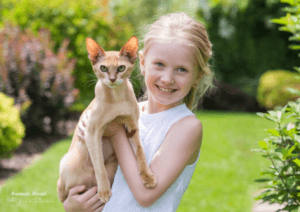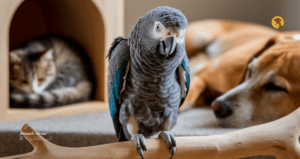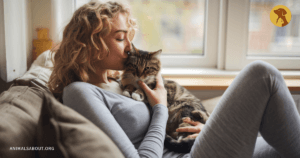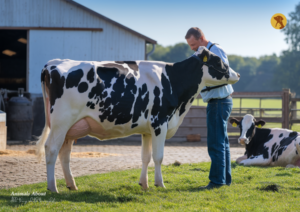Parrots are beautiful, intelligent, and emotionally complex creatures. But when fear takes over, even the most loving pet parrot may retreat, scream, or lash out. Whether you’re dealing with a newly adopted bird or a long-time companion that’s suddenly fearful, this guide will walk you through how to Handle Scared Pet Parrot using proven calming techniques, trust-building methods, and gentle training practices. Learn how to turn anxiety into affection—one step at a time. Curious about other unique pets that require special care? Explore our list of Best Exotic Animals to learn more about extraordinary companions like parrots.
Recognizing Parrot Stress Signs and Fear Behavior
To help your parrot, you must first identify the signs your parrot is scared. Parrot fear behavior often looks subtle at first but can escalate quickly if left unaddressed.
You may notice:
- Parrot hiding and shaking behind toys or cage corners
- Sudden biting or screaming when approached
- Feathers puffed up with wide, startled eyes
- Quick, startled movements or freezing in place
- Refusing food or vocalizations
Creating a Safe Space to Handle Scared Pet Parrot
A stressed bird needs more than attention—it needs the right environment. The most effective calming techniques for parrots start by building a physical and emotional safe zone.
Understanding these stress cues is the first step to handling a frightened parrot effectively. Fear isn’t just a phase—it’s a signal that your bird feels unsafe. If ignored, it can turn into long-term behavioral issues like aggression, feather plucking, or depression.
- Place the cage in a quiet, low-traffic area away from constant movement.
- Avoid placing the cage near televisions, loudspeakers, or where pets like dogs and cats roam.
- Use natural daylight with no sudden shadows or drafts.
- Keep cage bars clean and well-maintained for a secure feeling.
- Add soft perches, hiding spots, and familiar toys for comfort.
This setup supports your efforts in helping a scared bird and encourages them to trust their space. A calm home equals a calm parrot.
How to Gently Handle a Scared Pet Parrot: Steps That Work
You can’t force a parrot to feel safe. But you can invite them into calmness through small, deliberate actions.
- Speak in a soft, melodic voice.
- Approach slowly without making direct eye contact.
- Sit nearby and read or talk casually to normalize your presence.
- Offer treats like millet from outside the cage first.
- Use background sounds like soft music or nature recordings to ease tension.
If your parrot won’t come out of the cage, don’t panic. They need time to feel confident. Gaining their trust is better than pushing them forward too quickly.
Taming and Handling a Nervous Pet Parrot with Patience and Respect
If you want a bird that steps up, cuddles, or chats back—you’ll need to tame a nervous parrot slowly and respectfully. Forceful methods will only backfire.
Begin by spending short, non-threatening sessions near the cage. Don’t reach in or make sudden moves. Let the bird come to you emotionally before physically.
Once comfortable, you can:
- Offer food through the bars
- Gently introduce your hand without moving
- Use a calm, repetitive voice during feeding
- Slowly introduce perches outside the cage
This process is essential for parrot training for trust. It’s not about domination; it’s about cooperation. The more freedom you give, the more trust they’ll return.
Parrot Won’t Come Out of the Cage? Here’s What to Do
If your parrot won’t come out of the cage, don’t take it personally. It means they don’t feel safe enough yet. Offer consistency in your daily routines. Open the cage door at the same time each day and wait patiently.
Add a perch or treat just outside the door. Celebrate small wins—like them leaning out or climbing halfway. These are the first steps toward freedom and friendship.
Helping Parrots Adjust to a New Home
Moving to a new home can be traumatic for birds. Everything is unfamiliar—sounds, smells, people. Helping parrots adjust to a new home is all about gentle introductions.
- Set up their cage before they arrive.
- Keep handling to a minimum for the first few days.
- Maintain a steady feeding and cleaning schedule.
- Sit near them daily so they can learn your scent and voice.
- Avoid visitors or loud changes in the early weeks.
Give your bird the time to explore mentally before you expect physical connection. This lays the foundation for successful parrot socialization tips later on.
Bonding With a Scared Bird—Love Over Time
Bonding with a scared bird is like planting a garden. It takes time, consistency, and small acts of care. Avoid overwhelming them with noise or constant touch.
- Use the same words and phrases daily.
- Offer rewards for calm behavior.
- Use their name when speaking kindly.
- Respect their “no” when they move away.
Eventually, even shy parrots open up. One day you’ll see them step up, chirp when you enter the room, or mimic your laugh. That’s the joy of bonding built on trust.
Parrot Behavior Issues—Are They Fear-Driven?
Many parrot behavior issues stem from unresolved fear. Biting, screaming, or avoidance are often not signs of aggression, but cries for safety.
Address the root causes:
- Lack of mental stimulation?
- No consistent routine?
- Past trauma?
- Poor socialization?
Understanding your parrot’s behavior is the key to correcting it. You’re not just a pet owner—you’re their protector and guide.
How to Approach a Nervous Bird Without Scaring Them
Approach matters more than action. Learning how to approach a nervous bird sets the tone for every interaction.
- Never approach from above—it mimics predator behavior.
- Avoid reaching directly at the bird; let your hand be still.
- Let them see your hand coming from the side at eye level.
- Let them approach you before you interact.
These small gestures build the groundwork for lifelong trust. Fear fades when safety is consistent.
Disclaimer: This article is for informational purposes only and published on animalsabout.org. For specific concerns, consult a qualified avian veterinarian or bird behavior expert.







